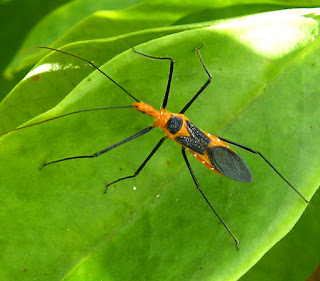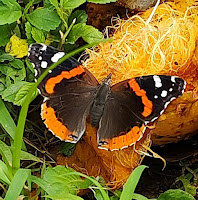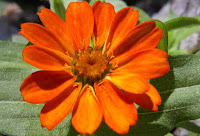Florida Nature Pictures
 |
| Viceroy Butterfly |
When you spot an orange and black butterfly fluttering through your garden, chances are your first thought is "Monarch!" And it's true, the iconic Monarch Butterfly (Danaus plexippus) is a familiar and beloved sight. But did you know there's another, less famous, but equally fascinating butterfly that often gets mistaken for its regal cousin? Enter the Viceroy Butterfly (Limenitis archippus).
The Viceroy is a wonderful master of mimicry. But while the Viceroy and Monarch share a similar color scheme, these two butterflies are distinct species with different life histories and fascinating evolutionary strategies.
So, how can you tell them apart? Here are the key differences:
The Signature Stripe: This is the easiest giveaway! Look closely at the hindwing (the bottom wing). The Viceroy proudly displays a single, thin black line running across it. The Monarch, despite its bold patterns, completely lacks this line. Think of it as the Viceroy's unique fingerprint.
Size Matters (Sometimes): Generally, Viceroys are a bit smaller than Monarchs. While this isn't always a foolproof method (there's variation within species), if you see two butterflies side-by-side, the smaller one is likely the Viceroy.
Flight Pattern: While subtle, their flight patterns can also differ. Monarchs tend to have a more soaring, gliding flight, while Viceroys often exhibit a faster, more erratic, and often lower flight closer to vegetation.
Host Plants: This is where their lives truly diverge. Monarchs accumulate toxins from their host plants Milkweed as caterpillars. The Viceroy caterpillar feeds on the leaves of Willows (Salix). The leaves of these plants contain salicin, a precursor to salicylic acid. They will also eat leaves from the Populus genus (poplar, aspen, cottonwood).
Why the Mimicry? A Story of Survival
While once thought to be harmless mimics of the toxic Monarch butterfly, it's now understood that Viceroys also contain toxins, making them unpalatable to birds and other animals. This is an example of Müllerian mimicry, where two or more toxic species evolve similar appearances for mutual protection. It's an incredible evolutionary adaptation!
So, the next time you see an orange and black butterfly, take a closer look. Is it a majestic Monarch on its epic migration, or is it the clever Viceroy, a master of disguise, proving that looks can indeed be deceiving. Both are beautiful and vital parts of our ecosystem, each with their own unique story to tell. Happy butterflying!












